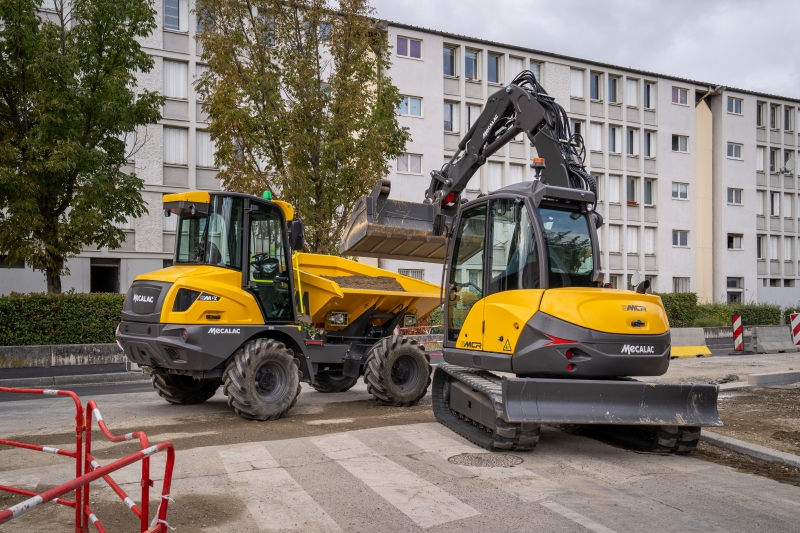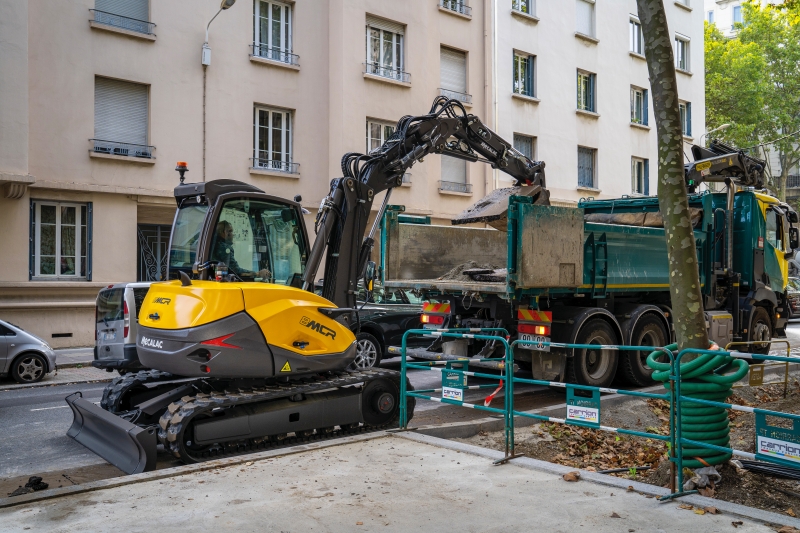
By Peter Bigwood, General Manager, Mecalac North America
With any demolition project, crews need reliable, powerful, and efficient equipment to not only tear down structures, but also to clean up and organize debris. It’s not uncommon to find compact equipment such as mini excavators and skid steers playing a supporting role on these jobsites due to their compact size, lighter weight, and maneuverability.
Another compact equipment option has been developed in recent years to bring a skillset well suited for both large and small demolition jobsites. They harness the speed and agility of a CTL and the maneuverability and digging capabilities of a mini excavator. With the addition of exceptional reach and high flow to attachments, they are ideal for demolition jobsites. The keys to their success lie in a variety of benefits.

True Versatility
Imagine a machine that combines the top benefits of a variety of equipment while performing every function equally well. For a smaller-scale demolition job, for example, a crawler skid excavator, like a traditional mini-excavator, is able to fit into a tight area with low clearance and break or perform other functions in any direction without repositioning the machine. At the same time, it offers higher flow to the attachment than a mini-excavator for greater power and higher reach than a skid steer, maximizing productivity.
Put the same machine on a large jobsite for clean-up and you have a machine that can travel up to 6.2 mph (10 km/h) — twice that of a mini excavator and similar to most CTLs on the market – with a bucket full of material and remain stable. Meanwhile, a crawler skid excavator is also capable of digging and loading from a single position, if needed, making it a powerful solution for contractors focused on maximizing ROI.
Wide Range of Motion
The ability to be both as compact and far-reaching as possible is a win on demolition jobsites. The crawler skid excavator’s boom design takes this concept to the next level. Consider that the majority of mini-excavators on the market today use a mono boom design, which has a limited overall range of motion. The main arm of a mono boom only allows it to move up and down, with the design relying on the dipper stick portion of the boom to reach, pull, and dig. This restricts the ability to work close to the machine and requires more room to operate.

In the close quarters of demolition jobsites, a side-mounted, two-piece boom on a crawler skid excavator offers a decided advantage due to greater compactness and 360-degree range of motion. The articulated design features an arm that is made up of five total joints – one between the second and third sections – that allows for limited side-to-side motion. Bending or straightening each joint in order allows the boom to extend almost straight in any direction. It can then fold back in on itself for maximum compactness, mobility, and a zero-turn radius.
This means that, from a single position, the equipment maintains excellent space management, increasing productivity by letting contractors dig, break or perform a number of functions within an incredibly compact 9-foot (2.7-meter) radius. Operators can take full advantage of these capabilities to ensure attachments are in the ideal position.
Jobsite MVP
To manage limited space and the need for multiple machines, a crawler skid excavator can be the ideal solution for demolition contractors looking to streamline their operations and maximize ROI. A machine that combines the best aspects of similar equipment with optimal performance for multiple functions is game-changing and sure to be the jobsite MVP.
What sets crawler skid excavators apart in demolition, and how do they offer a versatile solution for both small and large jobsites?
Crawler skid excavators combine the compactness of a mini-excavator with the power and reach of a skid steer, providing versatility for various demolition tasks in tight spaces and large-scale cleanup.
How does the boom design of a crawler skid excavator contribute to its efficiency on demolition jobsites, especially in terms of range of motion and space management?
The side-mounted, two-piece boom with a 360-degree range of motion allows a crawler skid excavator to work efficiently in close quarters, providing excellent space management and a zero-turn radius for increased productivity.










































